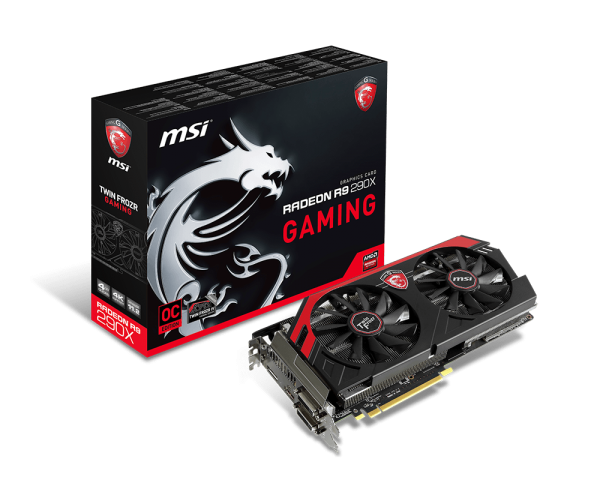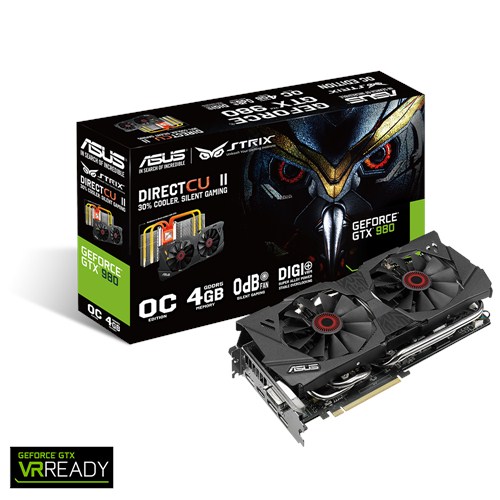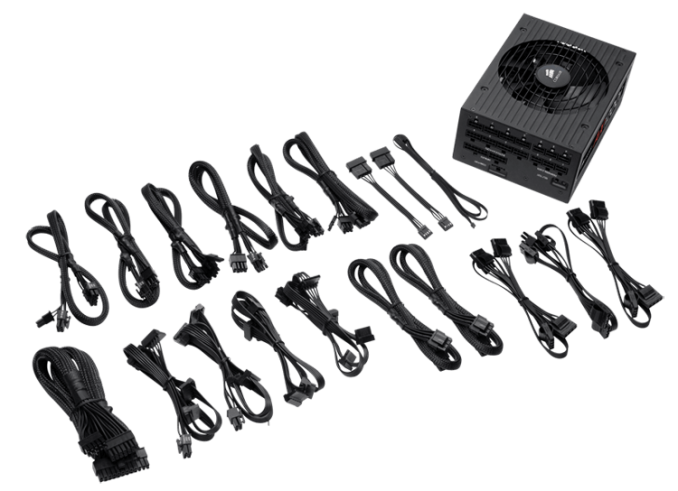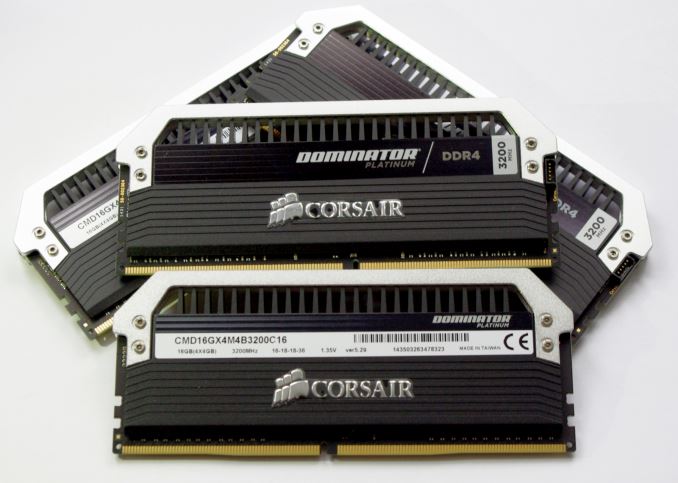AMD Carrizo Part 2: A Generational Deep Dive into the Athlon X4 845 at $70
by Ian Cutress on July 14, 2016 9:00 AM ESTTest Bed and Setup
As per our processor testing policy, we take a premium category motherboard suitable for the socket, and equip the system with a suitable amount of memory running at the manufacturer's maximum supported frequency. This is also typically run at JEDEC subtimings where possible. It is noted that some users are not keen on this policy, stating that sometimes the maximum supported frequency is quite low, or faster memory is available at a similar price, or that the JEDEC speeds can be prohibitive for performance. While these comments make sense, ultimately very few users apply memory profiles (either XMP or other) as they require interaction with the BIOS, and most users will fall back on JEDEC supported speeds - this includes home users as well as industry who might want to shave off a cent or two from the cost or stay within the margins set by the manufacturer. Where possible, we will extend out testing to include faster memory modules either at the same time as the review or a later date.
| Test Setup | |
| Processor | AMD Athlon X4 845: 2M/4T, 3.5 GHz, 65W, Carrizo Cores AMD Athlon X4 860K: 2M/4T, 3.7 GHz, 95W, Kaveri Cores AMD Athlon X4 760K: 2M/4T, 3.8 GHz, 100W, Richland Cores AMD Athlon X4 750K: 2M/4T, 3.4 GHz, 100W, Trinity Cores |
| Motherboards | ASUS A88X-Pro |
| Cooling | Cooler Master Nepton 140XL |
| Power Supply | Antec 1200W High Current Pro |
| Memory | GeIL Super Veloce 2x8GB DDR3-2400 C11 Kit |
| Memory Settings | JEDEC @ 2133 C10 for X4 845 JEDEC @ 1866 C9 for X4 860K/X4 760K/X4 750K |
| Video Cards | ASUS GTX 980 Strix 4GB MSI R9 290X Gaming 4G MSI GTX 770 Lightning 2GB MSI R9 285 Gaming 2G ASUS R7 240 2GB |
| Hard Drive | Crucial MX200 1TB |
| Optical Drive | Viewsonic VX2270XMH-LED 22-inch FHD |
| Case | Open Test Bed |
| Operating System | Windows 7 64-bit SP1 |
Many thanks to...
We must thank the following companies for kindly providing hardware for our multiple test beds. Some of this hardware is not in this test bed specifically, but is used in other testing.
Thank you to AMD for providing us with the R9 290X 4GB GPUs. These are MSI branded 'Gaming' models, featuring MSI's Twin Frozr IV dual-fan cooler design and military class components. Bundled with the cards is MSI Afterburner for additional overclocking, as well as MSI's Gaming App for easy frequency tuning.
The R9 290X is a second generation GCN card from AMD, under the Hawaii XT codename, and uses their largest Sea Islands GPU die at 6.2 billion transistors at 438mm2 built at TSMC using a 28nm process. For the R9 290X, that means 2816 streaming processors with 64 ROPs using a 512-bit memory bus to GDDR5 (4GB in this case). The official power rating for the R9 290X is 250W.
The MSI R9 290X Gaming 4G runs the core at 1000 MHz to 1040 MHz depending on what mode it is in (Silent, Gaming or OC), and the memory at 5 GHz. Displays supported include one DisplayPort, one HDMI 1.4a, and two dual-link DVI-D connectors.
Further Reading: AnandTech's AMD R9 290X Review
Thank you to ASUS for providing us with GTX 980 Strix GPUs. At the time of release, the STRIX brand from ASUS was aimed at silent running, or to use the marketing term: '0dB Silent Gaming'. This enables the card to disable the fans when the GPU is dealing with low loads well within temperature specifications. These cards equip the GTX 980 silicon with ASUS' Direct CU II cooler and 10-phase digital VRMs, aimed at high-efficiency conversion. Along with the card, ASUS bundles GPU Tweak software for overclocking and streaming assistance.
The GTX 980 uses NVIDIA's GM204 silicon die, built upon their Maxwell architecture. This die is 5.2 billion transistors for a die size of 298 mm2, built on TMSC's 28nm process. A GTX 980 uses the full GM204 core, with 2048 CUDA Cores and 64 ROPs with a 256-bit memory bus to GDDR5. The official power rating for the GTX 980 is 165W.
The ASUS GTX 980 Strix 4GB (or the full name of STRIX-GTX980-DC2OC-4GD5) runs a reasonable overclock over a reference GTX 980 card, with frequencies in the range of 1178-1279 MHz. The memory runs at stock, in this case 7010 MHz. Video outputs include three DisplayPort connectors, one HDMI 2.0 connector and a DVI-I.
Further Reading: AnandTech's NVIDIA GTX 980 Review
Thank you to Cooler Master for providing us with Nepton 140XL CLCs. The Nepton 140XL is Cooler Master's largest 'single' space radiator liquid cooler, and combines with dual 140mm 'JetFlo' fans designed for high performance, from 0.7-3.5mm H2O static pressure. The pump is also designed to be faster, more efficient, and uses thicker pipes to assist cooling with a rated pump noise below 25 dBA. The Nepton 140XL comes with mounting support for all major sockets, as far back as FM1, AM2 and 775.
Further Reading: AnandTech's Cooler Master Nepton 140XL Review
Thank you to Corsair for providing us with an AX1200i PSU. The AX1200i was the first power supply to offer digital control and management via Corsair's Link system, but under the hood it commands a 1200W rating at 50C with 80 PLUS Platinum certification. This allows for a minimum 89-92% efficiency at 115V and 90-94% at 230V. The AX1200i is completely modular, running the larger 200mm design, with a dual ball bearing 140mm fan to assist high-performance use. The AX1200i is designed to be a workhorse, with up to 8 PCIe connectors for suitable four-way GPU setups. The AX1200i also comes with a Zero RPM mode for the fan, which due to the design allows the fan to be switched off when the power supply is under 30% load.
Further Reading: AnandTech's Corsair AX1500i Power Supply Review
Thank you to Crucial for providing us with MX200 SSDs. Crucial stepped up to the plate as our benchmark list grows larger with newer benchmarks and titles, and the 1TB MX200 units are strong performers. Based on Marvell's 88SS9189 controller and using Micron's 16nm 128Gbit MLC flash, these are 7mm high, 2.5-inch drives rated for 100K random read IOPs and 555/500 MB/s sequential read and write speeds. The 1TB models we are using here support TCG Opal 2.0 and IEEE-1667 (eDrive) encryption and have a 320TB rated endurance with a three-year warranty.
Further Reading: AnandTech's Crucial MX200 (250 GB, 500 GB & 1TB) Review
Thank you to G.Skill for providing us with memory. G.Skill has been a long-time supporter of AnandTech over the years, for testing beyond our CPU and motherboard memory reviews. We've reported on their high capacity and high-frequency kits, and every year at Computex G.Skill holds a world overclocking tournament with liquid nitrogen right on the show floor. One of the most recent deliveries from G.Skill was their 4x16 GB DDR4-3200 C14 Kit, which we are planning for an upcoming review.
Further Reading: AnandTech's Memory Scaling on Haswell Review, with G.Skill DDR3-3000
Thank you to Corsair for providing us with memory. Similarly, Corsair (along with PSUs) is also a long-time supporter of AnandTech. Being one of the first vendors with 16GB modules for DDR4 was a big deal, and now Corsair is re-implementing LEDs back on its memory after a long hiatus along with supporting specific projects such as ASUS ROG versions of the Dominator Platinum range. We're currently looking at our review pipeline to see when our next DRAM round-up will be, and Corsair is poised to participate.
Further Reading: AnandTech's Memory Scaling on Haswell-E Review

















131 Comments
View All Comments
aryonoco - Friday, July 15, 2016 - link
Oh great, another AMD Bulldozer CPU, on 28nm, in 2016.I can't even begin to pretend to be enthusiastic about this.
The only people who will buy this are internet cafe/game centres in developing countries; none of whom care about AT says. I wonder why Ian thought he should spend so much time thoroughly reviewing a part that not one of AT's readers will ever buy.
Cryio - Friday, July 15, 2016 - link
To be fair this is an architecture from 2015 brought to desktops half-hearted and it wasn't released for any good reason IMO.Given the improvements Kaveri and Carizzo pose over the previous generations most of the time, if AMD would have released FX CPUs based on Stream Roller and Excavator, we would've got some interesting CPUs.
kondor999 - Friday, July 15, 2016 - link
Oh look, another shitty, hot, antiquated AMD CPU that only (gosh, I can't actually think of anyone) would buy.I really wish they'd get their act together. Not necessarily because I'd buy their products, but just to force Intel into giving us more than a 3% (or so) IPC iterative improvement.
TheinsanegamerN - Friday, July 15, 2016 - link
So, if you only want AMD to be competitive so that intel is more competitive, how do you expect them to do that when nobody buys their stuff? R and D needs money.silverblue - Friday, July 15, 2016 - link
Though temperature readings appear to be a bit hard to come by, the 845 appears to idle at 26 degrees and full load on AIDA64 at 40 degrees which puts it below anything else AMD has, making it comparable to the Pentium G3220 (though the former does have a better cooling solution).Source: http://www.eteknix.com/amd-athlon-x4-845-carrizo-p...
It's up to you whether you want to believe that or not.
Meteor2 - Saturday, July 16, 2016 - link
I don't think there's more than 3℅ IPC increase annually available. Apple, ARM, Qualcomm and Intel all seem to be converging at any given power.zodiacfml - Friday, July 15, 2016 - link
Waste of time. Yes, it competes with the Pentium, but the Intel chip has integrated graphics which could be useful whether the user has a graphics card or not. Paying more for less.Talking about Zen, it will just compete with Haswell generation chips. Intel knew this which is why their tick-tock strategy has slowed down.
cocochanel - Friday, July 15, 2016 - link
Intel didn't slow down because of AMD. It's because of x86. It's harder and harder even for mighty Intel engineers to squeeze more performance from an antiquated ISA. The fact that Zen took so long to get here it's a clear indication of the same.TheinsanegamerN - Monday, July 18, 2016 - link
There is no clear indicationAMD has far fewer resources then intel does, so it makes sense it would take them much longer to make a new CPU arch then intel.
Intel isnt making any advancements because they have no competition. There may be more performance sitting in their arch they are not using, since there really is no reason to.
Lolimaster - Saturday, July 16, 2016 - link
Carrizo totally gimped by l2 cache.The problem is that Bristol Ridge comes with the same pathetic 2MB for their 4 cores APU.